A fall mushroom with a beautiful brick red cap that appears after many others are done for the year, the brick cap mushroom (Hypholoma subalteritium) is a great species to know. Also known as the cinnamon cap and brick top mushrooms, these are a relatively common edible species anyone can learn to identify with practice.
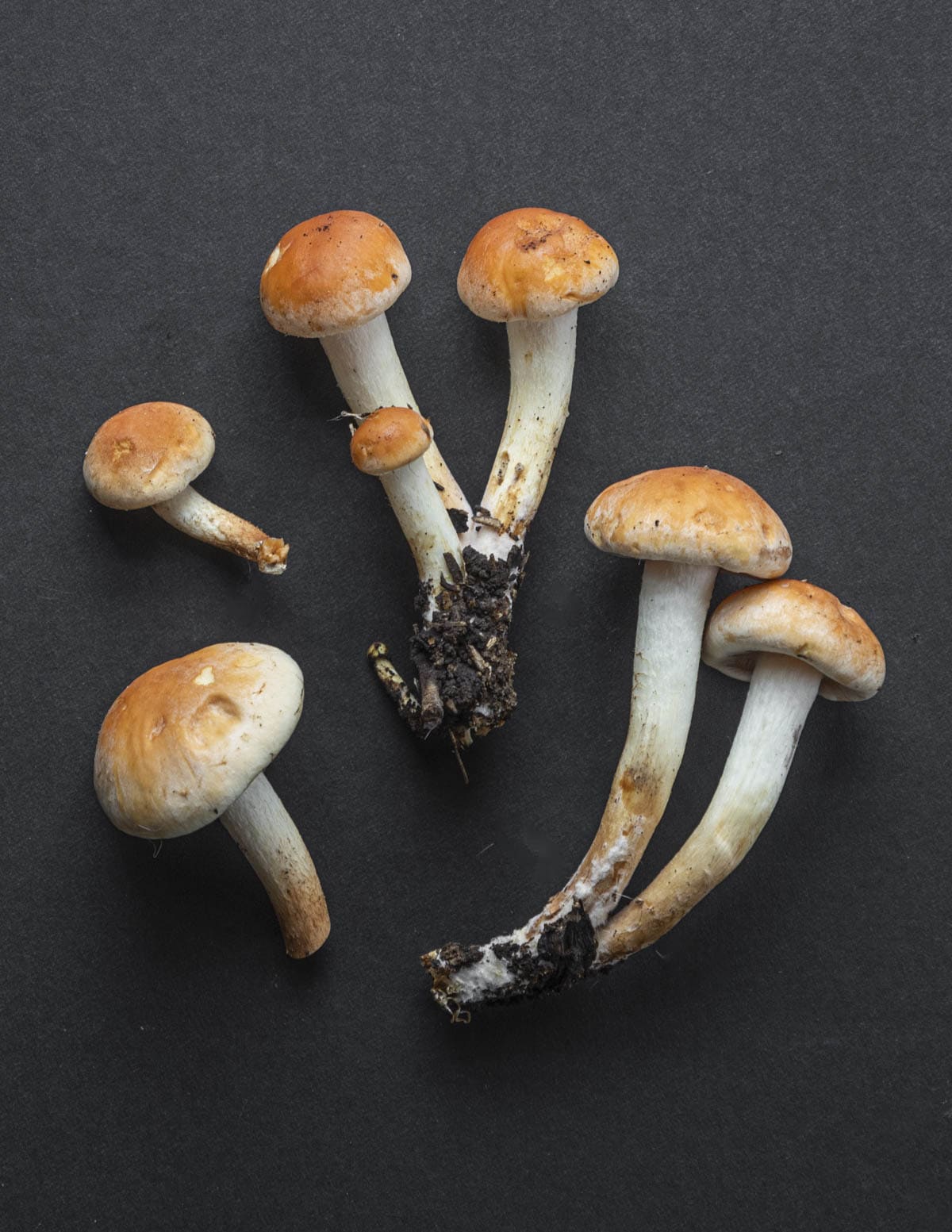
These are an underappreciated species that's widely distributed east of the Rocky Mountains. But, even though they're relatively common there's not much discussion about them online and many mushroom hunters don't look for them. As they're saprobic like oyster mushrooms I'm hoping to work with a local company to cultivate them.
One thing that's important to know is that the common name cinnamon cap can refer to other mushrooms like the cultivated chestnut mushroom (Pholiota adiposa). The two species are similar for culinary purposes and make a good substitute for one another.
Are Brick Cap Mushrooms Edible?
If you look at field guides the information on edibility is confusing. Some mushroom field guides omit them entirely, some say they're edible, some say they have a bitter taste and are inedible.
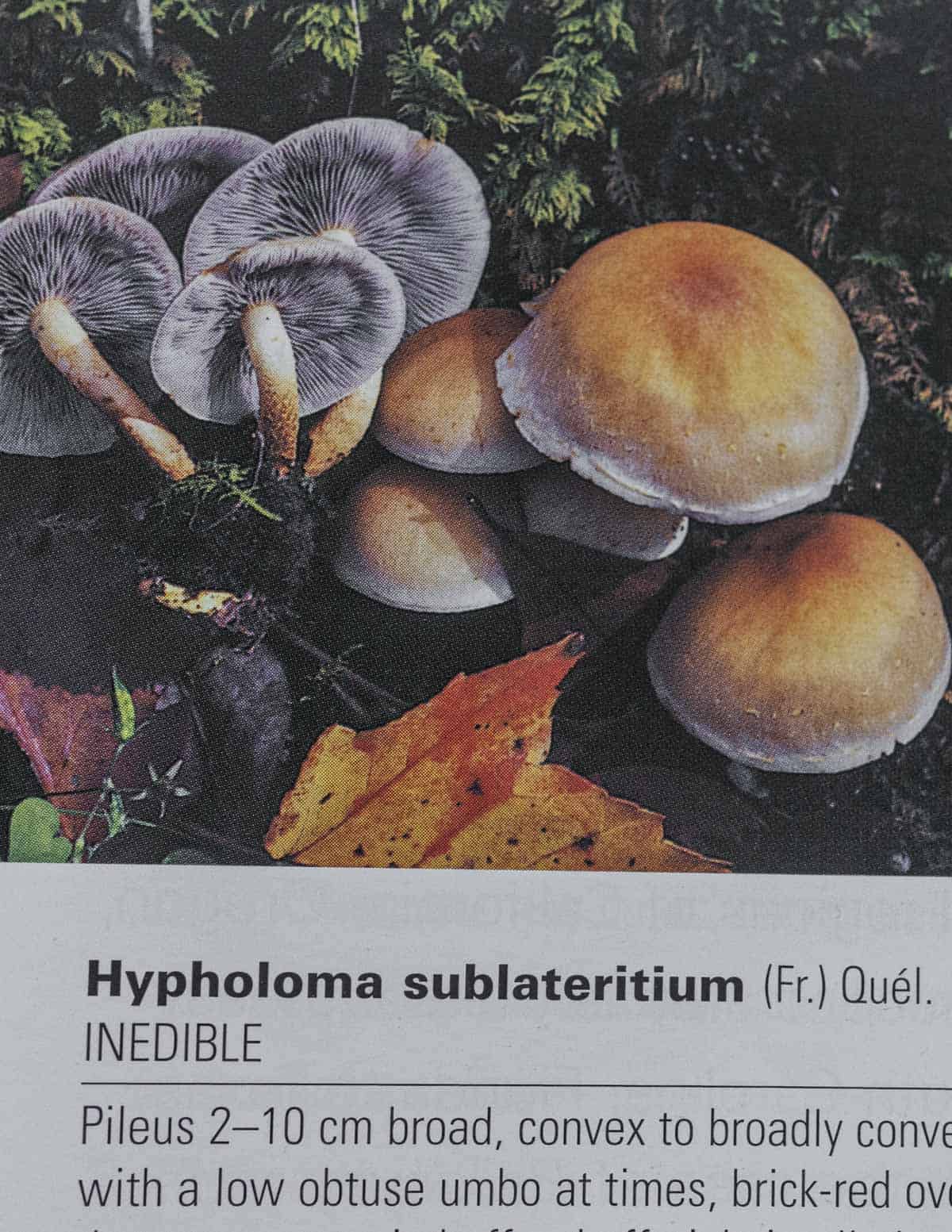
From Mushrooms Demystified: "N. sublateritium of Eastern North America has a brick-red cap. It fruits in clusters on dead hardwoods in the fall and earlywinter, and is edible and quite common."
From Edible Mushrooms of North America: "Both species (H. sublateritium and H. capnoides) are fine edibles, especially when young".
To be clear, brick cap mushrooms are edible and good, and I've never tasted bitterness in them. However, they do come with a caveat.

Brick caps are related to wine caps (Stropharia rugosoannulata), and wine caps are well known to cause gastric upset in some people that are sensitive to them. A phrase you might hear used with these mushrooms is that they're "edible with caution".
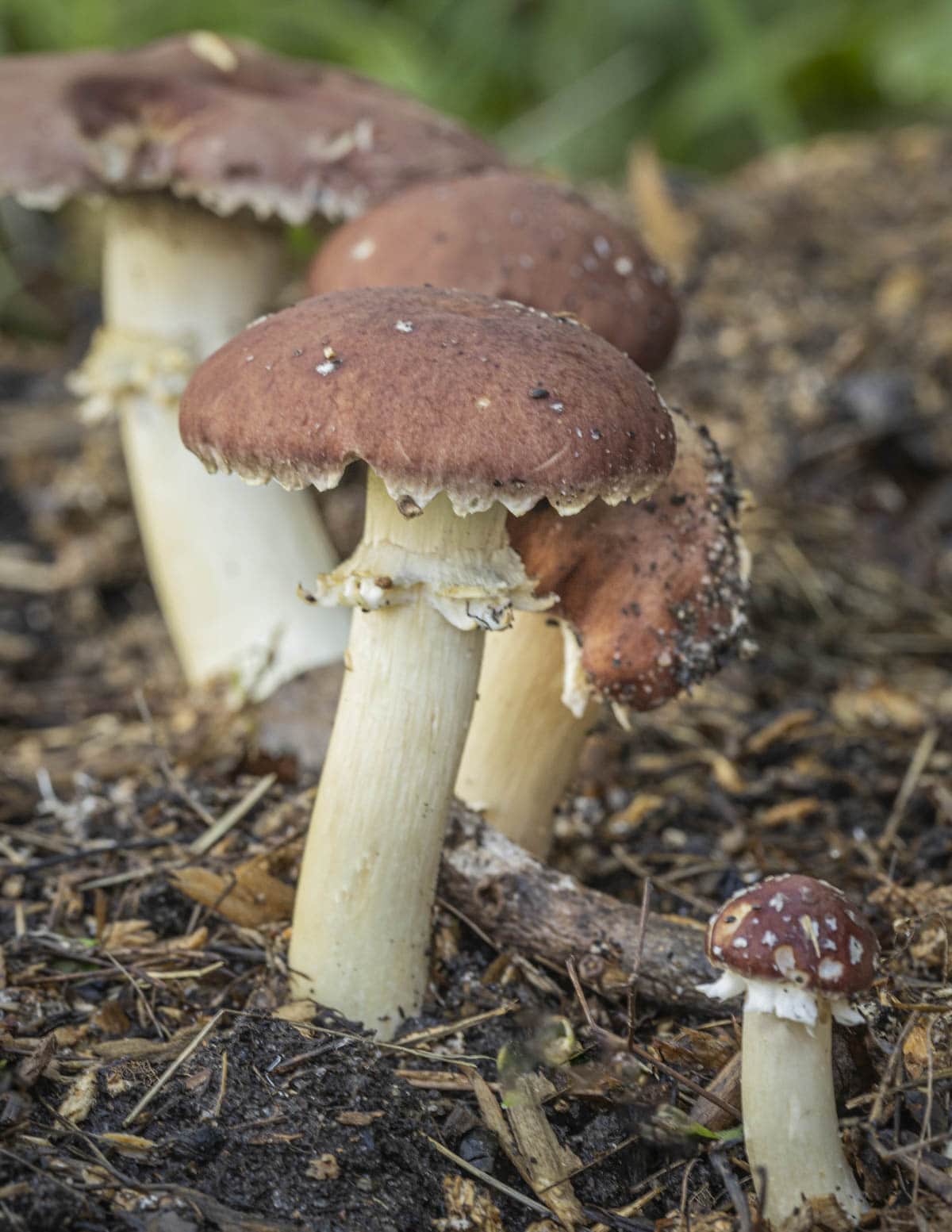
This means they're fine to eat as long as you don't have an intolerance, which is common with many mushrooms (chicken of the woods for example). They should also be thoroughly cooked as an extra precaution.
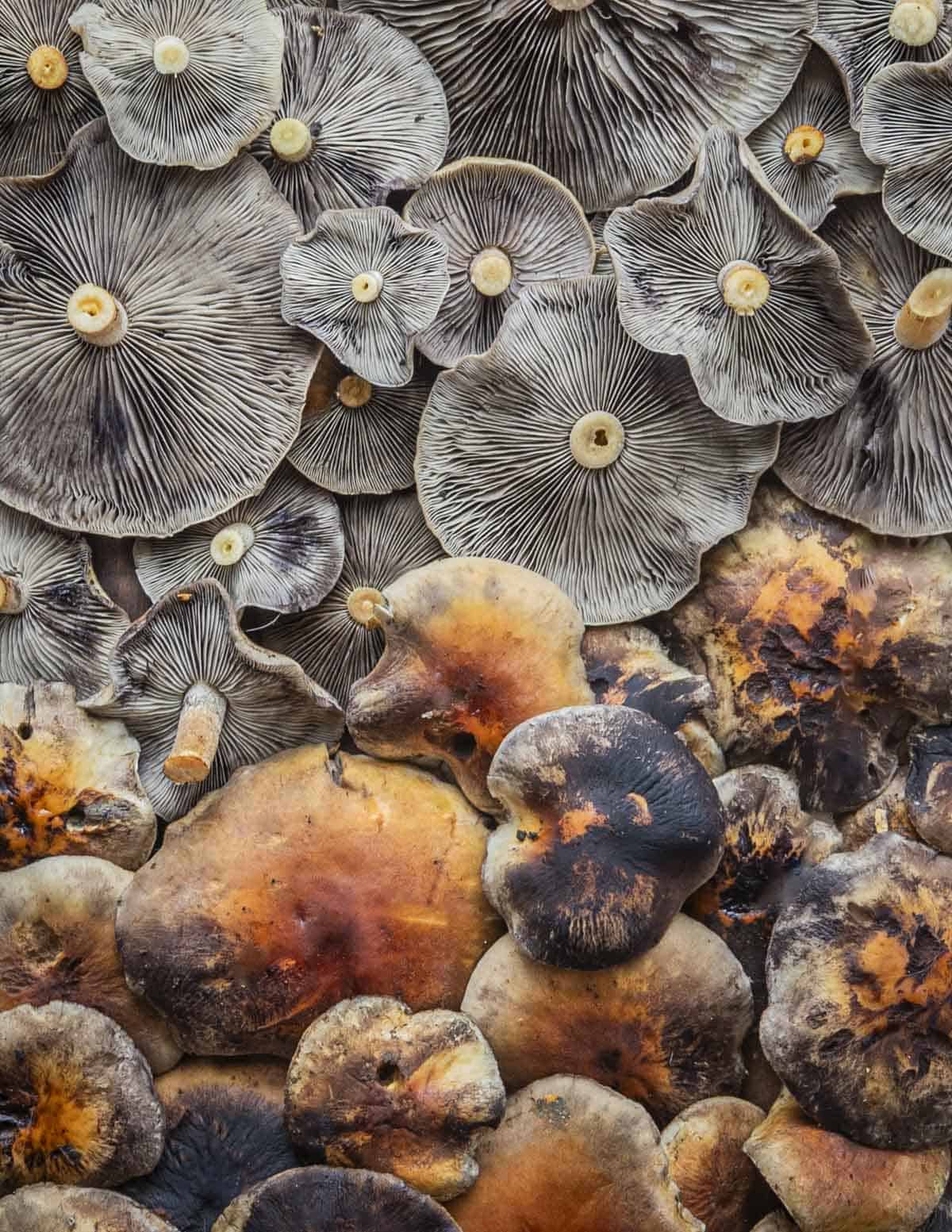
Brick Cap Mushroom Identification
These mushrooms change in color and shape as they grow, so one of the most important things to learn is how to identify them in every stage of development. Thankfully, young, intermediate, and mature mushrooms often grow together. The infographic below shows mushrooms picked from the same log.
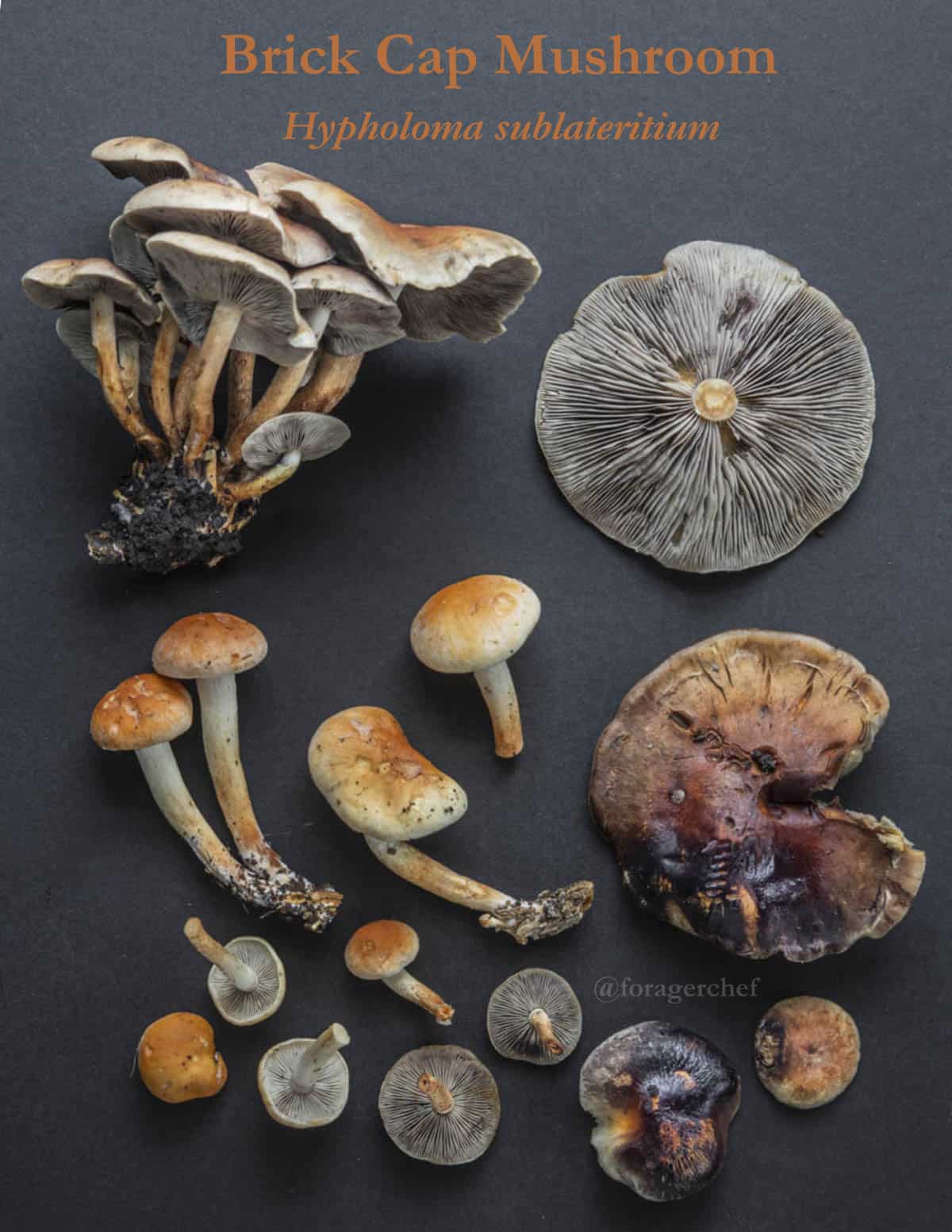
Like oyster mushrooms, brick caps are decomposers: saprobic mushrooms that feed on decaying wood. They typically (but not always) grow in tight clusters on decaying hardwood logs and stumps starting around October in the Midwest.
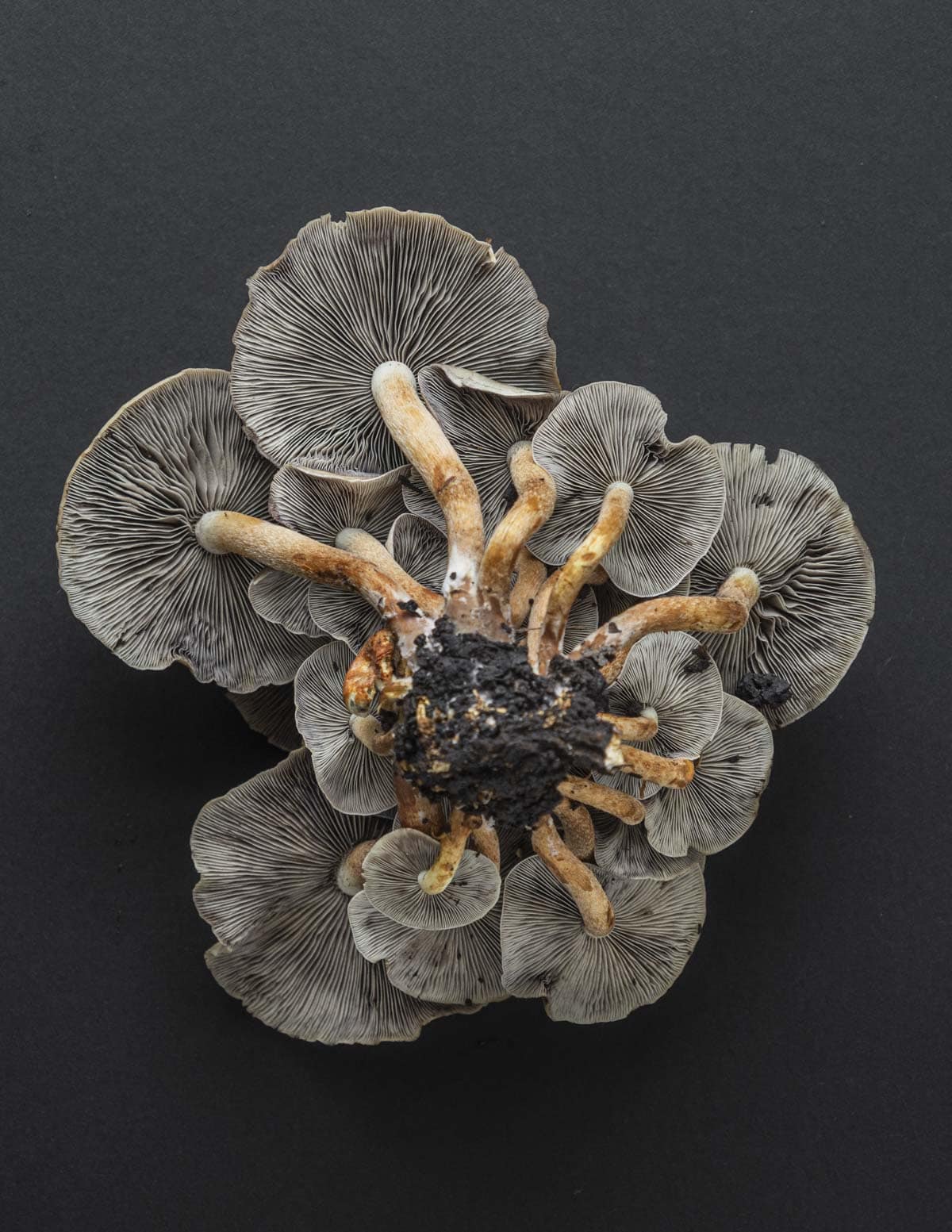
They have a number of distinct characteristics we'll go over for posterity, but most of the time the brick red caps with pale margins are pretty easy to spot.

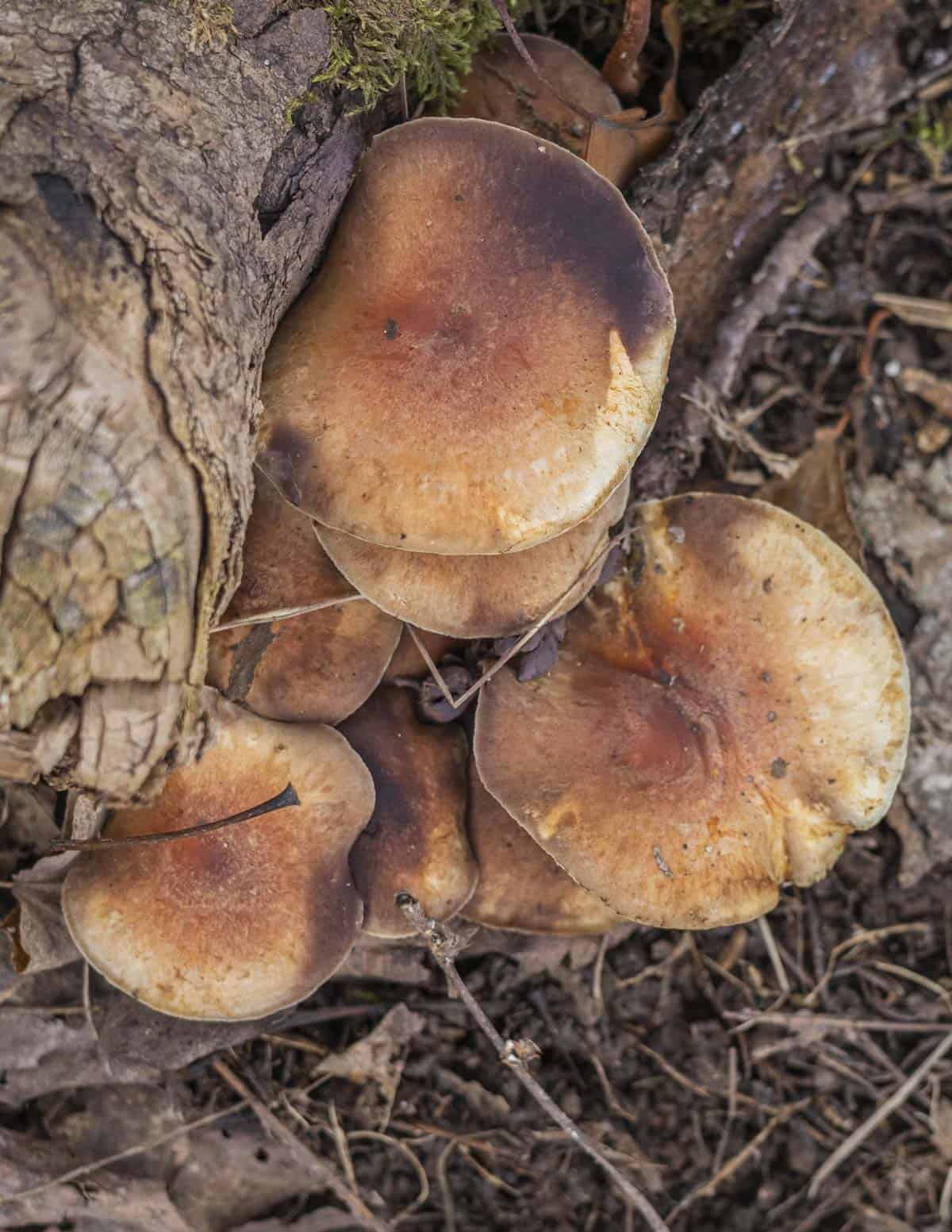
The gills start out white to gray when young, turning dark purple gray as they mature. Mature mushrooms will produce a natural purple-brown to purple-black spore print creating a distinct, mottled pattern on the caps.

The stems are whitish near the cap, reddish near the base and may appear shaggy like a Pholiota.

When young the cap margin is curved and may show a partial veil as shown below.

Brick Cap Mushroom Look Alikes
Generally speaking there's a few brick cap look alikes and some of them are well-known poisonous mushrooms. Thankfully the cap color and natural spore print make them relatively easy to pick out once you get the hang of them.
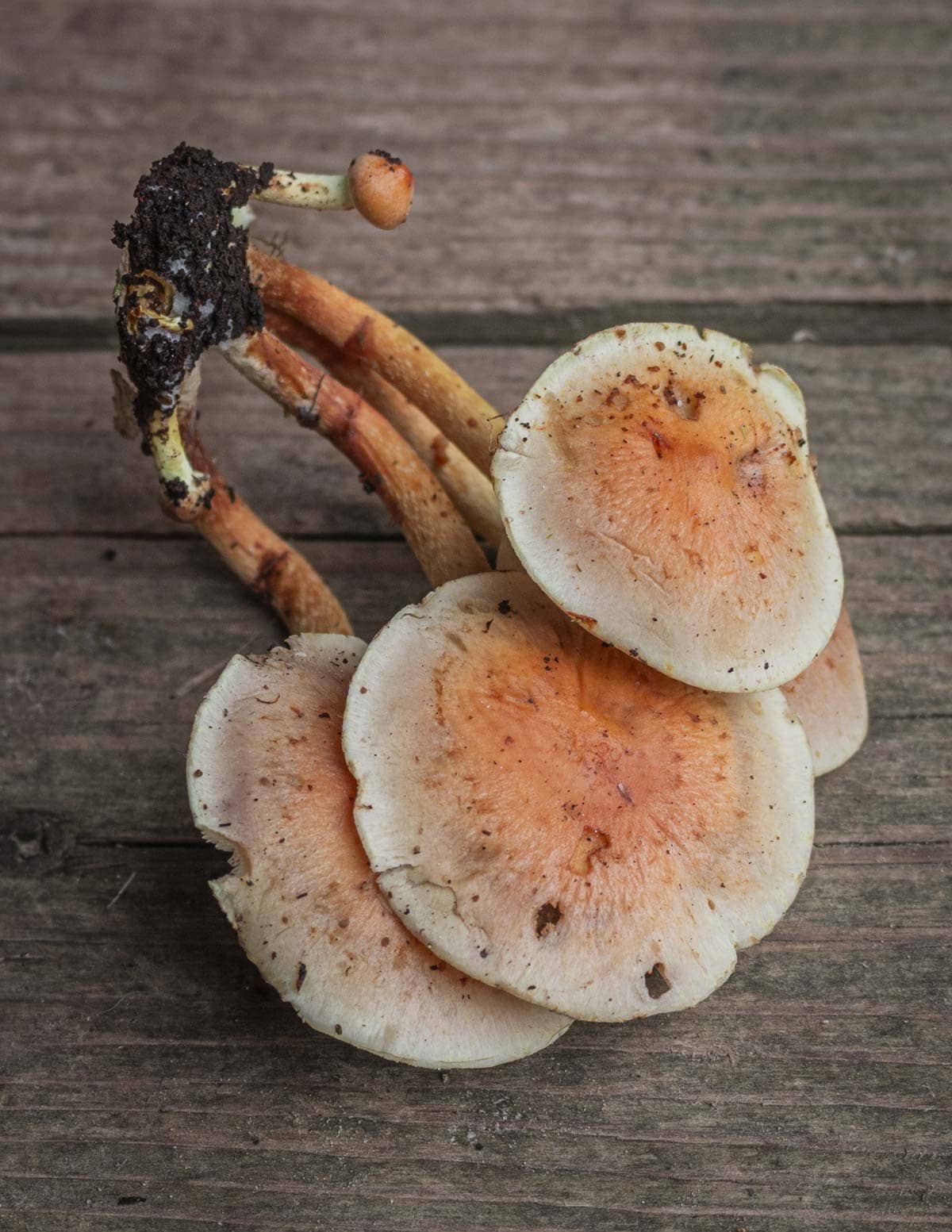
That said, these are an intermediate level mushroom, so take your time getting to know them. Besides the species mentioned below, Pholiota (most of which are considered inedible) also grow in the fall on decaying wood, but have visibly shaggy caps.
Funeral Bell / Galerina marginata
The first look alike everyone should know, and a common poisonous mushroom is the deadly galerina.

These also grow on decaying hardwoods but can be found from spring to fall. They differ from the brick cap in that the cap is bell shaped, the mushrooms are generally smaller and they typically have a ring around the stem.
Sulphur Tuft (Hypholoma fasciculare)
Another very important brick cap look alike to know are poisonous sulphur tuft mushrooms. Sulphur tufts are also a Hypholoma species, growing on decaying hardwoods in the fall-often in close proximity to brick caps.

Sulphur tufts have yellow to slightly orange caps and greenish or sulphur-yellow gills that turn purple-brown as they age. The infographic below shows the two mushrooms side by side. If you can learn the difference between brick red and sulphur-yellow, you can identify both of these mushrooms.
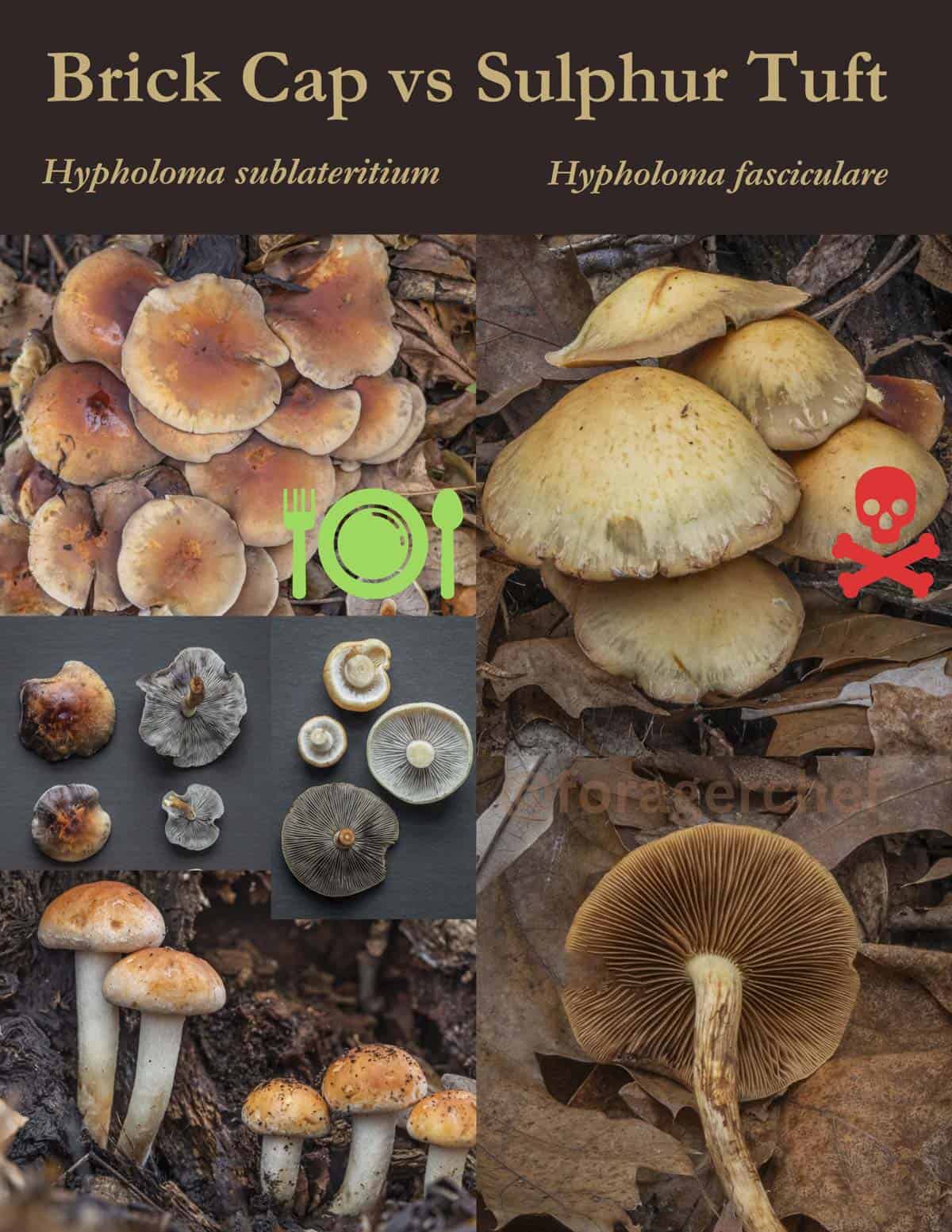
Smoky Gilled Hypholoma (Hypholoma capnoides)
Unlike the previous look alikes, the smoky gilled Hypholoma is edible. Just like H. sublateritium, it grows in the fall during cold weather. It differs from the brick cap in that it grows on coniferous wood instead of deciduous and has a yellow-ish-orange, bell-shaped cap.

Harvesting and Cooking Brick Top Mushrooms
Harvesting
Look around cut stumps and areas that have been logged in the past around October. Typically red oak stumps have been the best for me.
Young mushrooms are the best, ideally before they produce spores. Older mushrooms are fine to eat, but the flesh gets thin and brittle so I typically dry them.
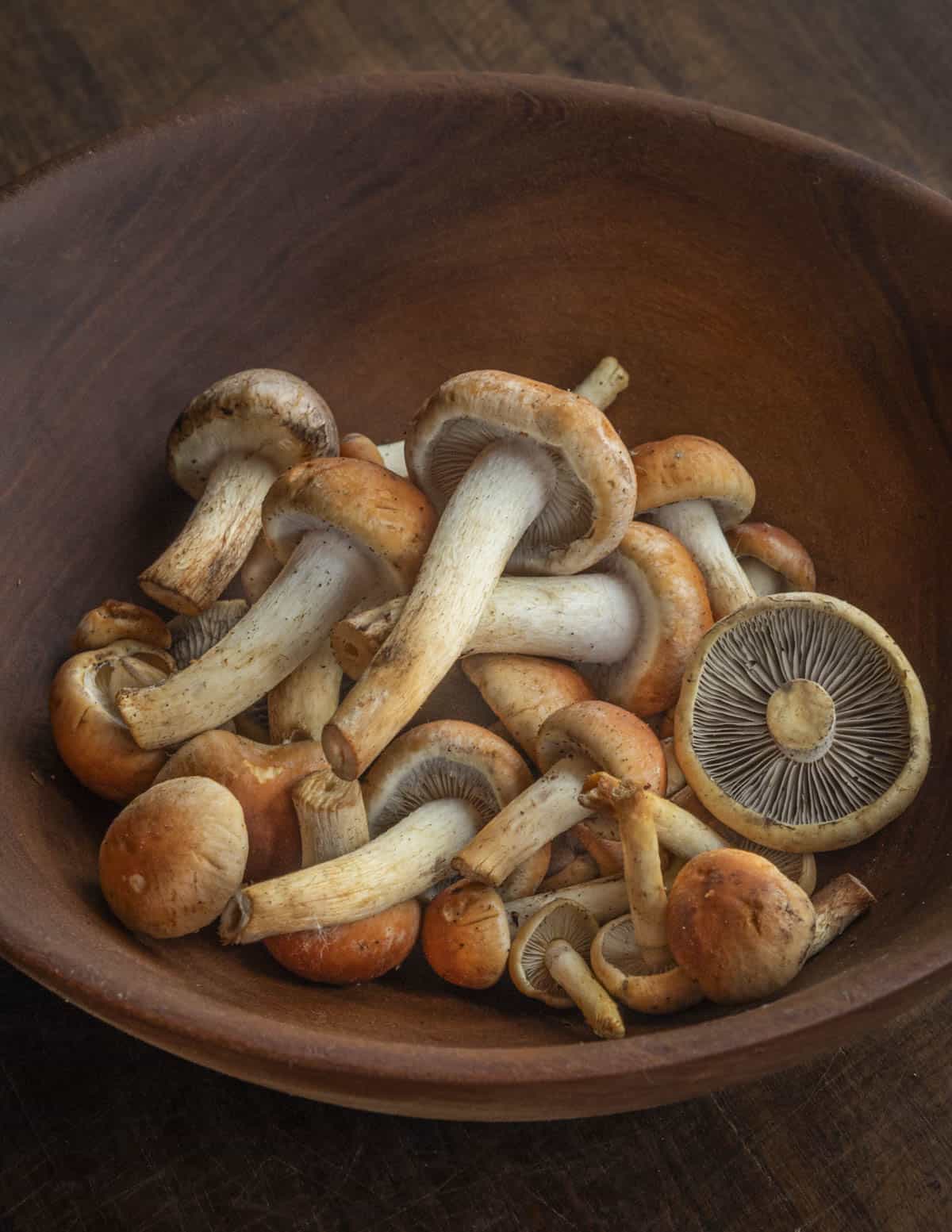
If you've grown wine caps you'll be know the fungal gnat larvae love them and unfortunately the same is true with brick caps. In my experience, any mushrooms that are harvested after producing spores should be cooked within 2-3 days or dehydrated. Young mushrooms without larvae can last for a week or two in the refrigerator.

One nice thing is that as they grow directly from wood, they can be kept very clean if you cut individual mushrooms carefully. I trim the tough stems and discard them as the cap is the best part.
As the mushrooms can be brittle with age, I like to clean them and store in a hard-sided container in the fridge with a dry paper towel. A zip top bag works too.
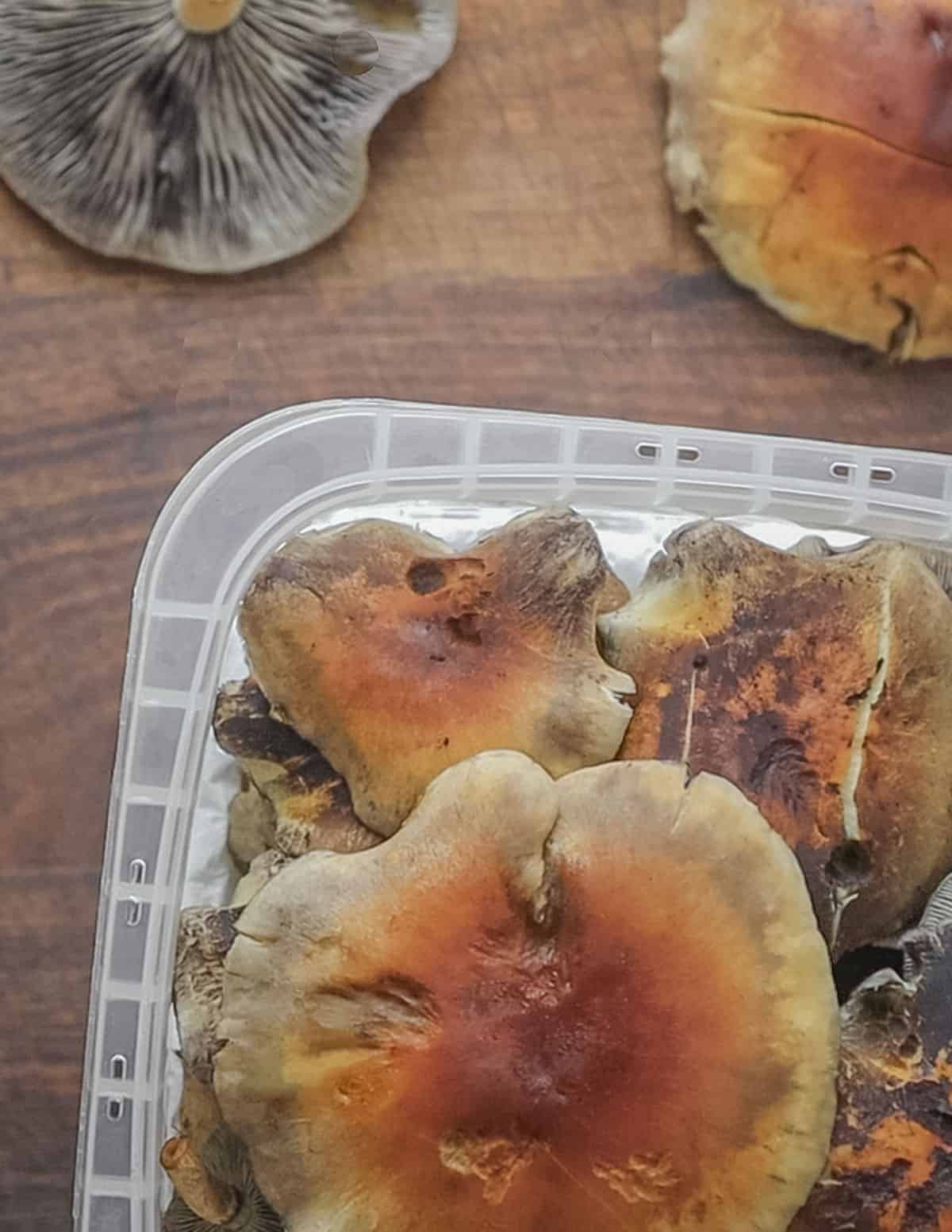
Cooking
Brick caps taste mild and mushroomy with a subtle nutty flavor comparable to wine caps. They can be added to just about any mushroom recipe from soups to sautes, pastas and stir-fries. Unlike wine caps they won't discolor dishes and turn them black.
Before cooking I separate the mushrooms by quality. Older mushrooms or those with bug damage are dehydrated for soups and broths.

Young mushrooms are best cooked whole to enjoy their crisp texture, just trim the stems so they're not too long. Caps that have opened can be cooked whole or cut into pieces as shown below.
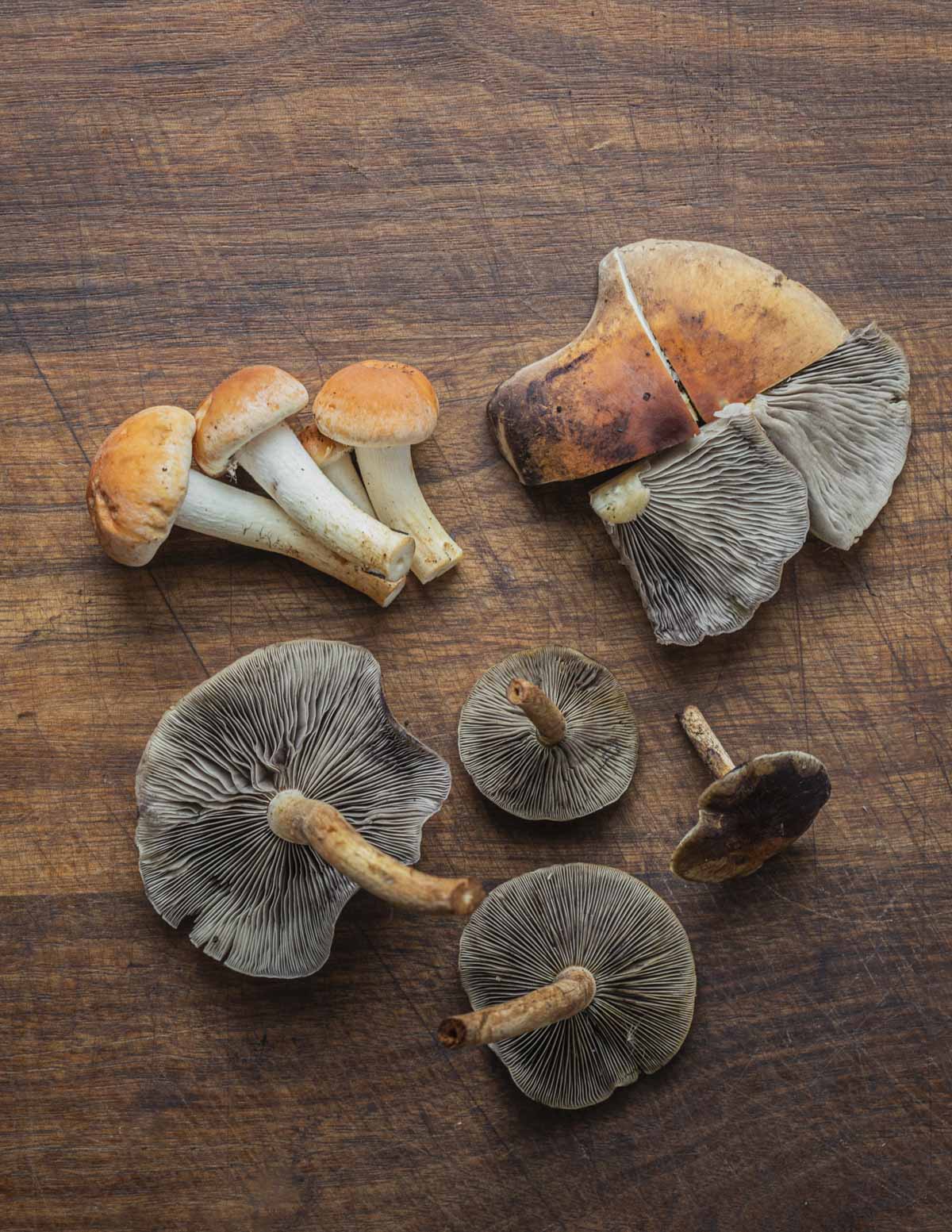
A simple brick top mushroom recipe for fresh young caps is a mushroom pasta aglio olio, with garlic, oil and hot chili.
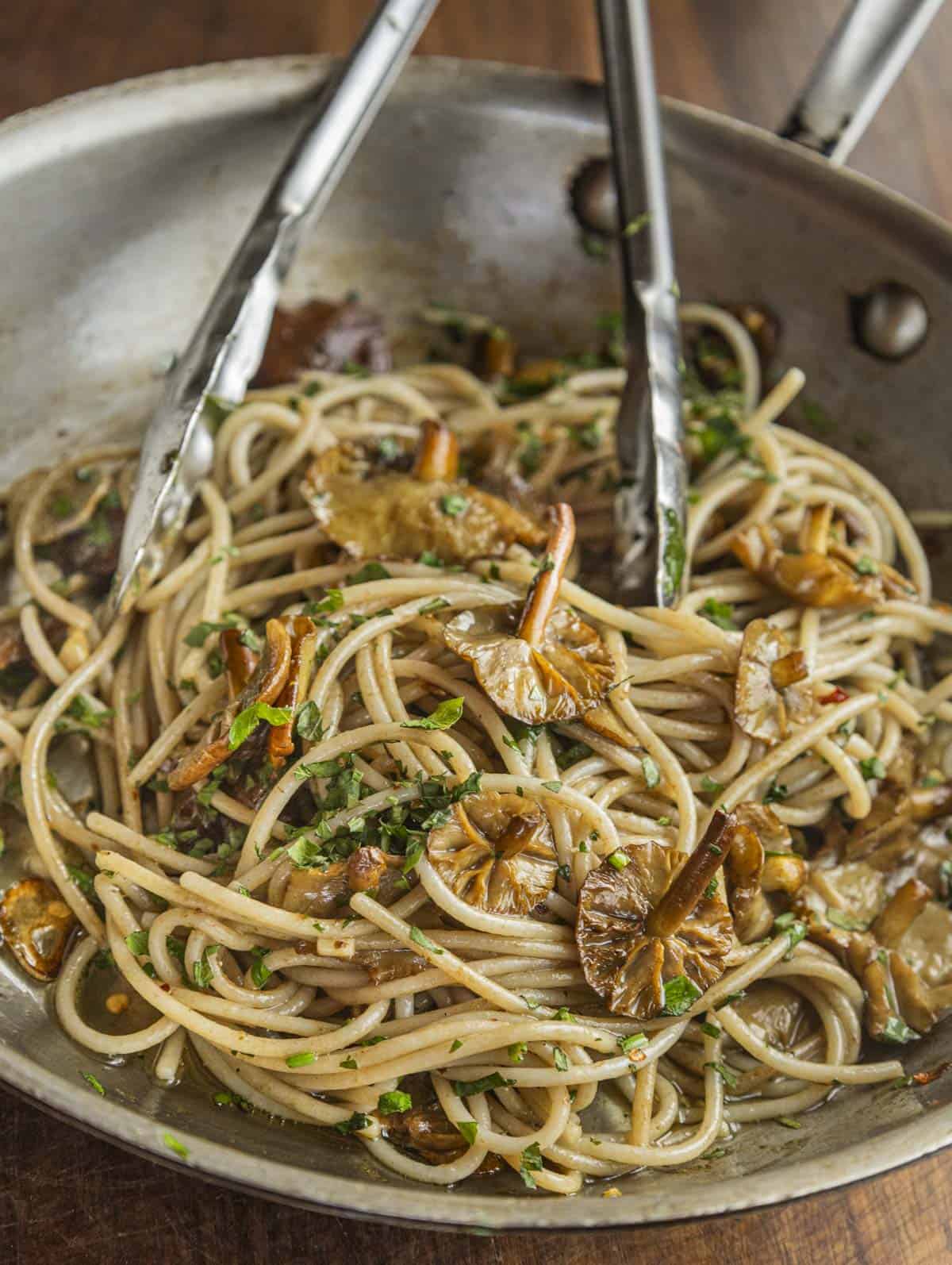
If you're lucky enough to get perfect young mushrooms, a simple mushroom saute with salt and pepper is great for your first time. If you have enough of them they're great simmered in a simple, clear broth with noodles or rice.
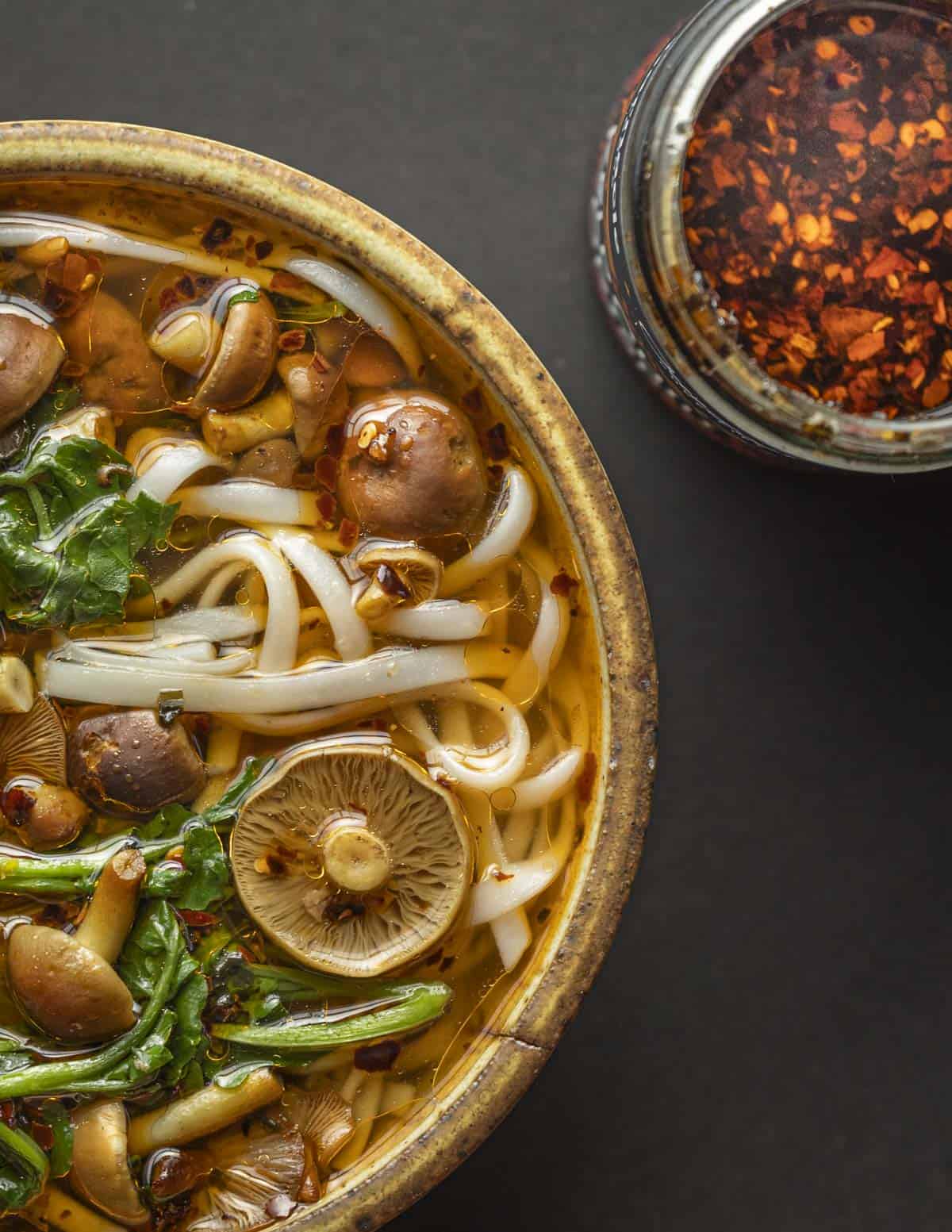
Dried mushrooms are great for soups and sauces. Mixed with a few other varieties they're a good candidate for my zuppa di funghi / Italian mushroom soup.

EC
The Sulphur Tuft don't look as appetizing as the Brick Cap either, at least not in the picture you posted, lol.
Alan Bergo
I absolutely agree. The yellow-green and overall look isn’t as attractive. One thing I tell people often is that wild food should look like food, obv something that had to be used in the right context though.